Physical Address
304 North Cardinal St.
Dorchester Center, MA 02124
Evaluation of a pelvic mass, uterine enlargement, endometrial abnormalities, ovarian masses or acute pelvic pain ▸ it allows transabdominal and transvaginal guidance of fluid or tissue sampling ▸ it allows transvaginal-guided drain placement and guidance for placement of brachytherapy for cervical and endometrial malignancy ▸ it allows intraoperative assessment for the completion of evacuation of products of conception
Transabdominal US (TAS): a full bladder is required ▸ a 3.5–5 MHz transducer is used
Transvaginal US (TVS): an empty bladder is required ▸ a 5–8 MHz transducer is used ▸ it allows closer apposition to the pelvic organs
Doppler US: this provides information on vascularity
Premenopausal
Uterus: 5–9 cm in length
Endometrium: proliferative phase: ≤8 mm ▸ midcycle: a trilaminar appearance measuring up to 12–16 mm ▸ secretory phase: hyperechoic due to the increasing glandular complexity ▸ ≤16 mm
Ovaries: these are anterior to the iliac vessels ▸ they typically measure 30 mm in any two dimensions but may measure ≥50 mm in one plane ▸ the ovarian volume is usually <10 cm 3
Postmenopausal
Endometrium: <5 mm (unless on hormonal therapy, when it can measure ≤8 mm)
The distant staging of gynaecological malignancies ▸ the detection of persistent and recurrent pelvic tumour ▸ for biopsy guidance
Uterus: a triangular or ovoid soft tissue structure located behind the urinary bladder ▸ the myometrium enhances with contrast (helping to delineate the endometrium, which is of lower attenuation)
Cervix: a rounded structure inferior to the uterine corpus
Vagina: a flat rectangular structure at the level of the fornix
Broad and round ligaments: these are seen coursing laterally and anteriorly (respectively)
Ovaries: these are posterolateral to the uterine corpus ▸ they are of soft tissue density with small cystic regions ▸ they are atrophic in postmenopausal women
For the evaluation of Müllerian duct anomalies ▸ for the local staging of uterine and cervical cancer ▸ as a problem-solving tool in the evaluation of adnexal masses ▸ allowing differentiation between radiation fibrosis and recurrent tumour ▸ permitting radiologically guided biopsies
The pelvic musculature and viscera are of homogeneous low-to-intermediate SI
The endometrium and outer myometrium enhances more than the junctional zone
The inner cervical mucosa and outer smooth muscle enhances more than the fibrocervical stroma
The zonal anatomy is demonstrated as follows:
Uterus:
Endometrium: this is of high SI ▸ ≤8 mm (proliferative phase) ▸ ≤16 mm (secretory phase) ▸ <5 mm (postmenopausal women that are not receiving hormonal therapy)
Junctional zone (representing the innermost myometrium): this is of low SI (due to its low water content)
Peripheral myometrium: this is of intermediate SI (and higher than striated muscle)
Cervix:
Endocervical glands and mucus: central high SI
Stroma: low SI (as it is composed of elastic fibrous tissue)
Periphery of cervix: intermediate SI similar to myometrium (as it is composed of smooth muscle)
Vagina:
Mucosa: high SI
Vaginal wall: intermediate SI
Ovaries: The follicles demonstrate higher SI than the surrounding stroma
This uses a glucose analogue, 2-[ 18 F]-fluoro-2-deoxy-D-glucose (FDG) ▸ it is not widely available but can be used in cervical and ovarian cancer
Radiopaque contrast medium is instilled into the uterus and Fallopian tubes ▸ it is used for the evaluation of infertility
Cervical canal: 3–4 cm long and ![]() the length of the uterus (it shortens after childbirth) ▸ it is often spindle shaped and there may be glandular filling
the length of the uterus (it shortens after childbirth) ▸ it is often spindle shaped and there may be glandular filling
Cavity of uterine body: this is triangular in shape ▸ the average length and intercornual diameter is approximately 35 mm
Fallopian tubes: these are 5–6 cm long ▸ the isthmus is of uniform diameter and opens laterally into a wide ampulla
A 5F catheter is placed through the cervix ▸ distension of the uterine cavity is obtained with sterile saline under direct US visualization
This is more accurate than endovaginal US alone ▸ focal pathology can be differentiated from diffuse endometrial conditions with increased accuracy ▸ it can differentiate between intracavitary, endometrial and subendometrial pathology ▸ it can evaluate tubal patency
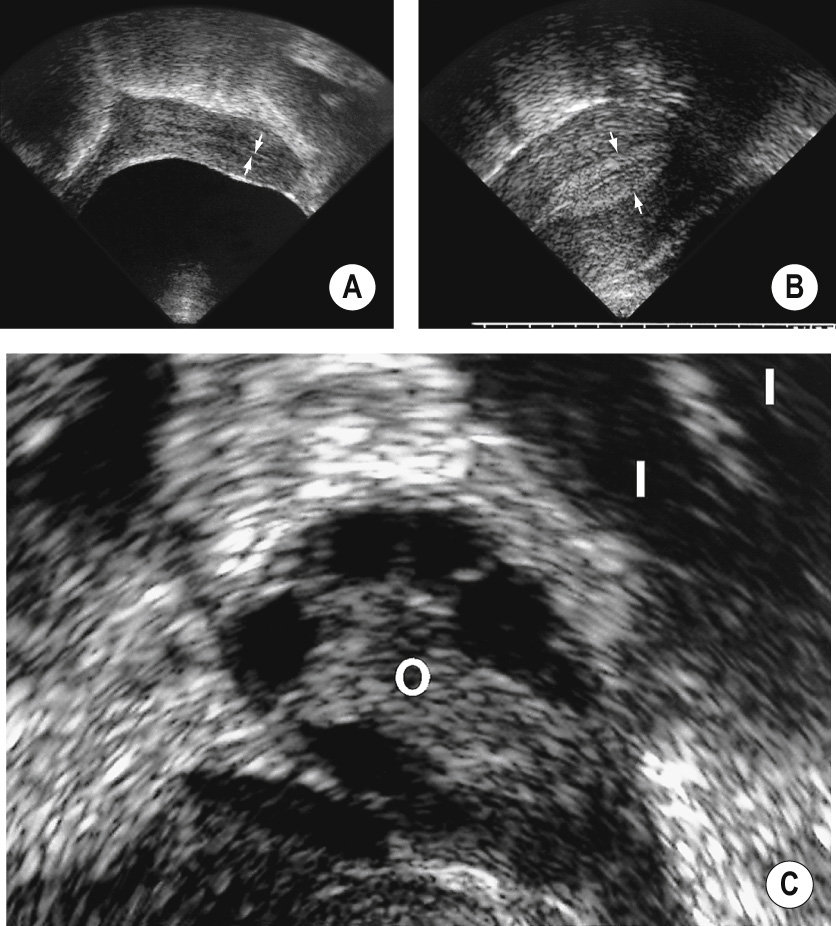
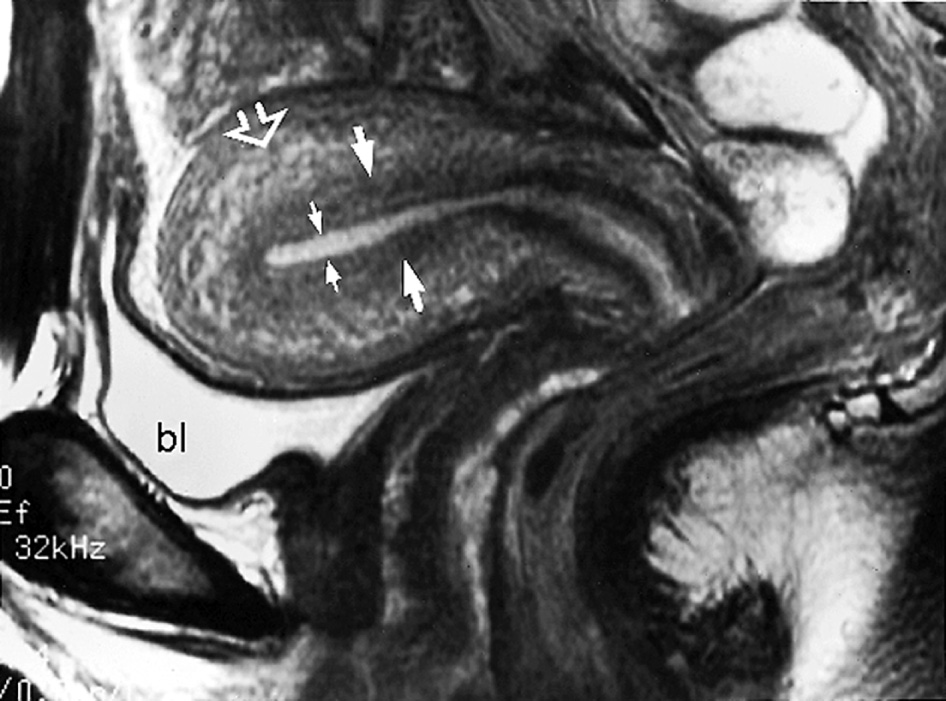
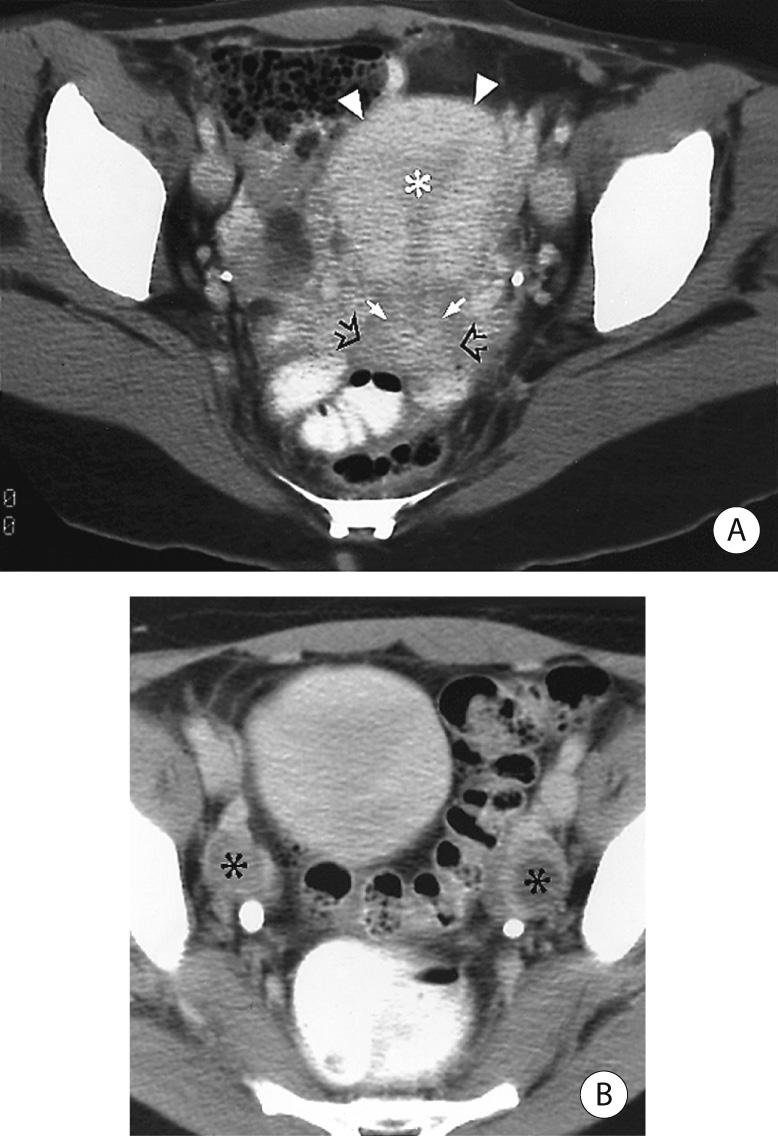
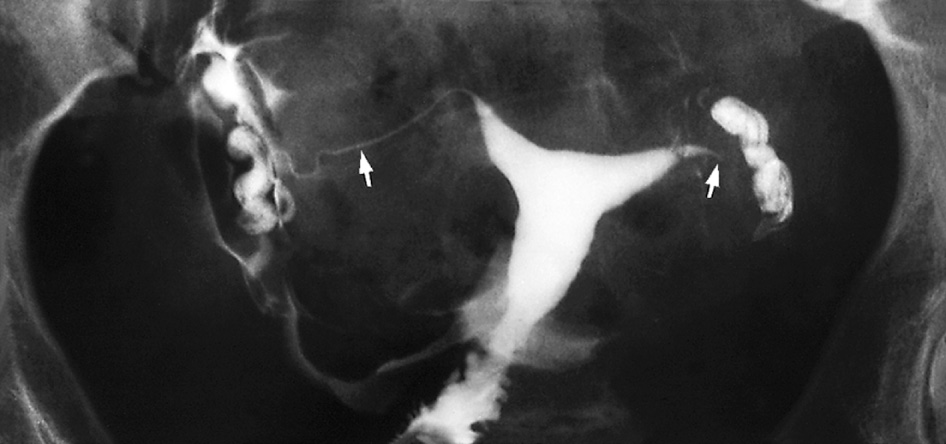
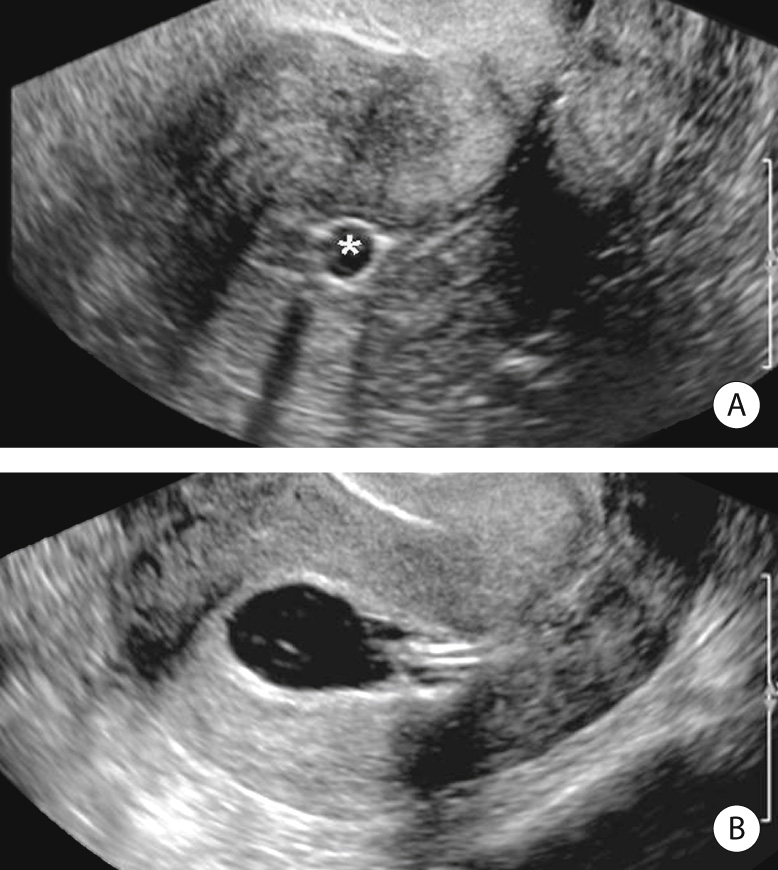
Embryology: the uterus, upper ![]() of the vagina and Fallopian tubes are derived from the paired Müllerian ducts ▸ at approximately 10 weeks following conception the ducts migrate caudally and undergo fusion and subsequent canalization ▸ congenital anomalies arise when this process is interrupted:
of the vagina and Fallopian tubes are derived from the paired Müllerian ducts ▸ at approximately 10 weeks following conception the ducts migrate caudally and undergo fusion and subsequent canalization ▸ congenital anomalies arise when this process is interrupted:
Non-development: uterine agenesis
Varying degrees of non-fusion: a didelphys or bicornuate uterus
Non-resorption of the Müllerian ducts: septate uterus
Asymptomatic ▸ menstrual disorders ▸ infertility ▸ obstetric complications
Congenital anomalies are present in 1–15% of women, with associated renal anomalies in up to 50% of cases
Due to non-development or rudimentary development of the Müllerian ducts
Uterine hypoplasia: a small uterus with an atrophic endometrium ▸ T2WI: the myometrium is of lower SI than normal ▸ ovaries are normal
Uterine agenesis: MRKH Syndrome
Due to non-development or rudimentary development of one Müllerian duct ▸ the remaining Müllerian duct is fully developed ▸ increased obstetric complications/renal abnormalities
T2WI: a ‘banana-like configuration’ of the normal duct: there is a curved, elongated uterus with tapering of the fundal segment off the midline ▸ the normal uterine zonal anatomy is maintained ▸ the rudimentary horn demonstrates lower SI
Due to non-fusion of the two Müllerian ducts
T2WI: there are two widely separate normally sized uterine horns with two cervices ▸ the endometrial and myometrial widths are preserved ▸ vaginal septum (75%)
T1WI: haemorrhage may be seen if there is a transverse septa causing obstruction
Due to partial fusion of the Müllerian ducts (with incomplete fusion of the cephalad extent of the uterovaginal horns with resorption of the uterovaginal septum) ▸ obstetric complications relate to the degree of horn fusion
The uterine horns are separated by an intervening cleft (>1 cm) within the external fundal myometrium ▸ a normal zonal anatomy is seen within each horn + a dividing septum composed of central myometrium
Bicornuate unicollis: the central myometrium extends to the internal os
Bicornuate bicollis: the central myometrium extends to the external os ▸ there is some fusion between the two horns (cf. complete separation with didelphys)
Due to incomplete resorption of the final fibrous septum between the two uterine horns
The septum may be partial, or it may be complete and extend to the external cervical os
T2WI (parallel to uterine long axis): a convex, flat or concave (<1 cm) external uterine contour (+ fibrous septa)
Single uterine cavity with a convex / flat uterine fundus
Uterine cavity demonstrates a small fundal cleft ▸ often considered a normal variant ▸ no effect on pregnancy
Uterine hypoplasia with a ‘T-shaped’ uterus
Due to failure of the vaginal plate to form, or a failure of cavitation
MRKH syndrome: upper vaginal agenesis or hypoplasia (with normal ovaries and Fallopian tubes) accompanied by variable anomalies of uterus (class 1), urinary tract and skeletal system
A transverse vaginal septum prevents loss of menstrual blood and results in haematocolpos
T2WI: a dilated vagina with intraluminal fluid of intermediate or high SI (± fluid and debris levels) ▸ the lower ![]() of the vagina is replaced by low SI fibrous tissue with loss of the normal zonal anatomy
of the vagina is replaced by low SI fibrous tissue with loss of the normal zonal anatomy
T1WI (+ fat suppression): this confirms the presence of any blood products which appear of high SI
This often presents with an incidental asymptomatic vaginal septum
Gartner duct cysts: anterolateral upper vagina above pubic symphysis
Bartholin gland cysts: posterolateral lateral vaginal introitus below pubic symphysis
Nabothian cysts: cervical cysts
Compared to a bicornuate uterus, a septate uterus is associated with a higher rate of reproductive complications
A collagenous septum cannot support a pregnancy as well as a myometrial septum
A transverse vaginal septum in adolescence with cyclical abdominal pain + a pelvic mass
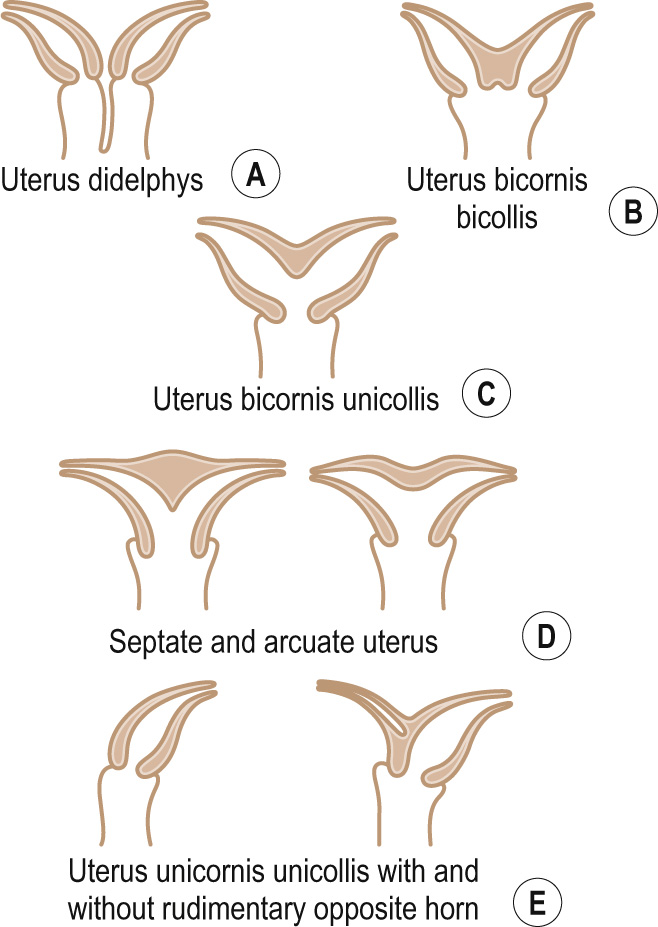
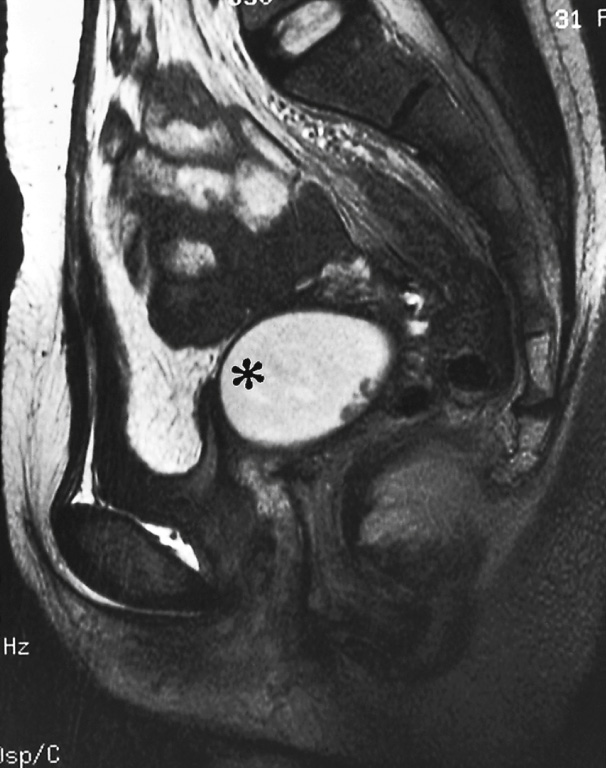
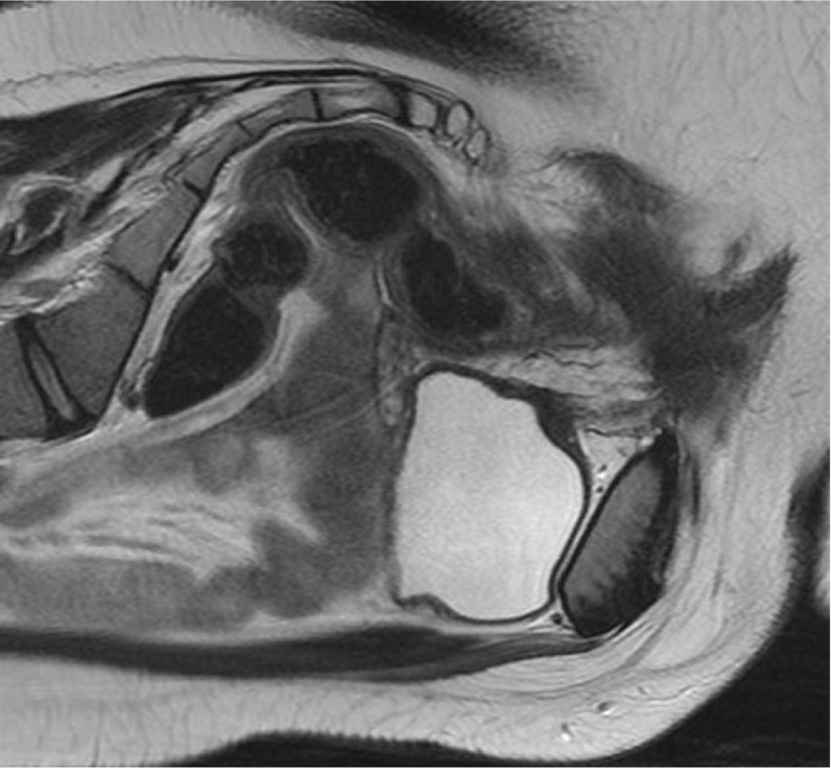
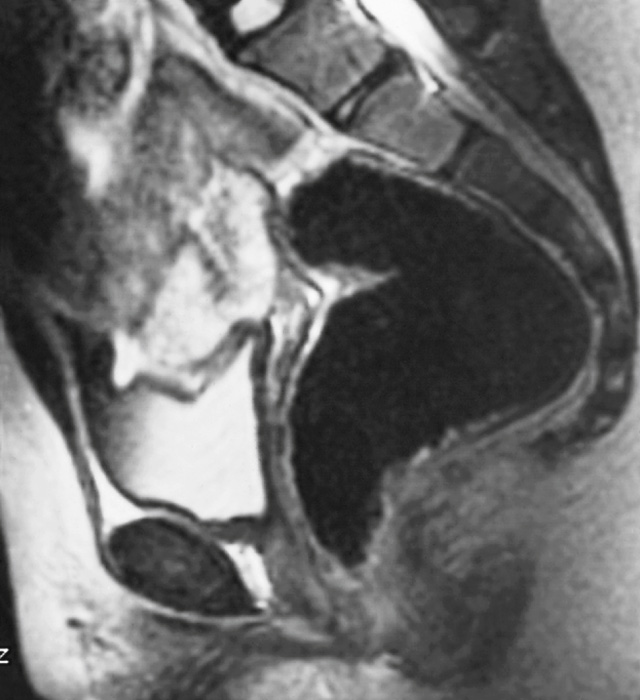
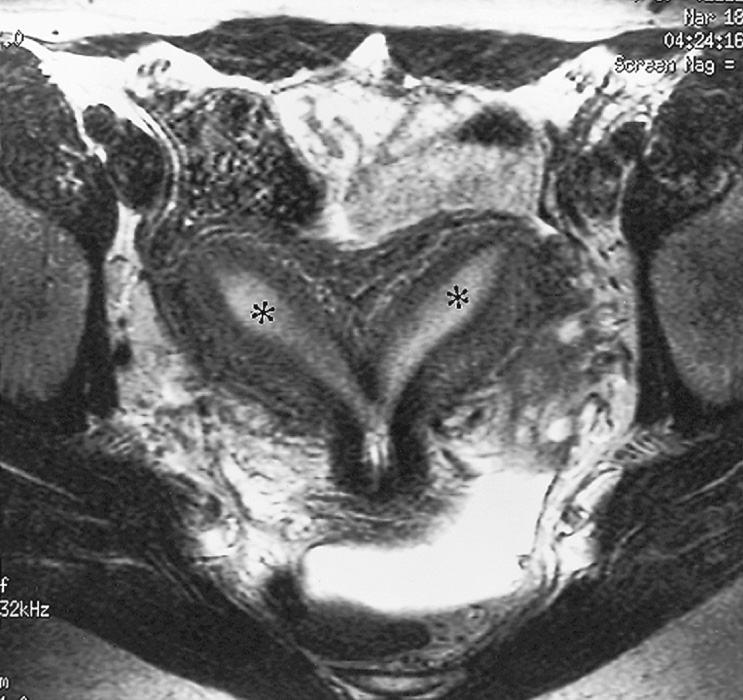
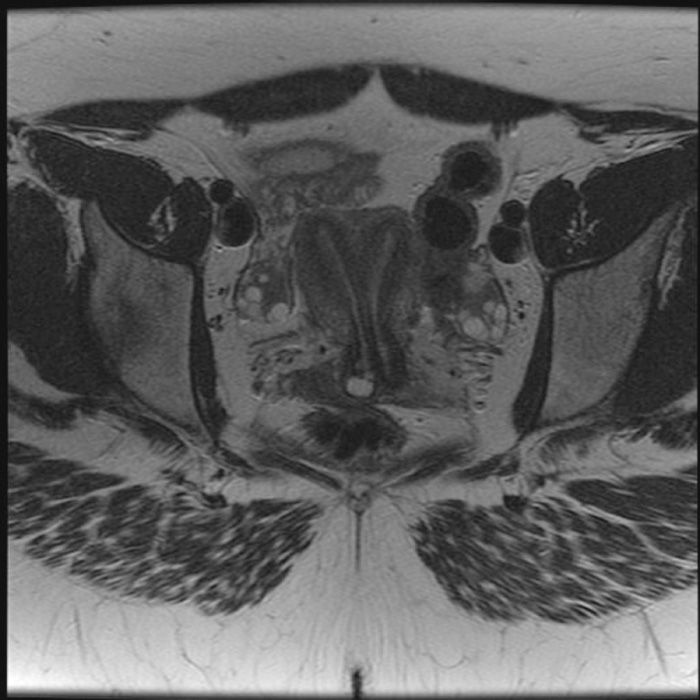
A benign tumour arising from uterine smooth muscle cells (± varying amounts of fibrous tissue) ▸ it is oestrogen dependent, and therefore regresses after the menopause
It is the most common uterine tumour (seen in up to 40% of premenopausal women) ▸ they are usually multiple
Intramural: the most common type
Submucosal: this is the most likely to be symptomatic
Subserosal: this may be pedunculated (± torsion)
Menorrhagia (if there is a submucosal location) ▸ dysmenorrhoea ▸ subfertility (due to narrowed Fallopian tube or interference with implantation) ▸ urinary frequency
Red degeneration: this follows acute impairment of the blood supply (often during pregnancy), and presents with acute abdominal pain and tenderness
Hyaline degeneration: there is gradual impairment of the blood supply, and it is asymptomatic
Obstetric complications: malposition ▸ a retained placenta ▸ interference with vaginal delivery ▸ premature uterine contractions
Fibroids are more prevalent amongst black women
An enlarged uterus (± an irregular and lobular outline) ▸ a well-marginated, hypoechoic, rounded mass within the uterine body ▸ distortion of the endometrial complex if there is a submucosal component
Depending on the proportion of smooth muscle, fibrosis and degeneration, appearances can range from hypoechoic to echogenic, and homogeneous to heterogeneous ▸ there can be acoustic shadowing or shadowing echogenic foci due to the presence of calcification
Submucosal leiomyomas may mimic endometrial lesions on US – US HSG may aid in the diagnosis
A fibroid has a soft tissue density similar to that of normal myometrium ▸ necrosis or degeneration may result in low attenuation (± calcification or uterine contour deformity)
This allows the precise determination of the size, location and number of leiomyomas ▸ it can differentiate a pedunculated subserosal leiomyoma from an adnexal mass
T1WI: well-circumscribed, rounded lesions with intermediate SI
T1WI (FS): this can demonstrate haemorrhagic degeneration (with high SI)
T1WI + Gad: the enhancement is less than that of the adjacent myometrium ▸ any degenerated areas may not enhance
T2WI: there is lower SI relative to the myometrium or endometrium ▸ signal voids represent calcification or vessels
Cystic degeneration: well-defined non-enhancing areas of fluid density ▸ myxoid degeneration: very high signal on T2WI (non-enhancing) ▸ red degeneration: massive haemorrhagic infarction + necrosis (peripheral low T2WI rim + high T1WI signal)
Treatment: hysterectomy, myomectomy or uterine arterial embolization (UAE) ▸ MR-guided ultrasound ablation is a recent innovation
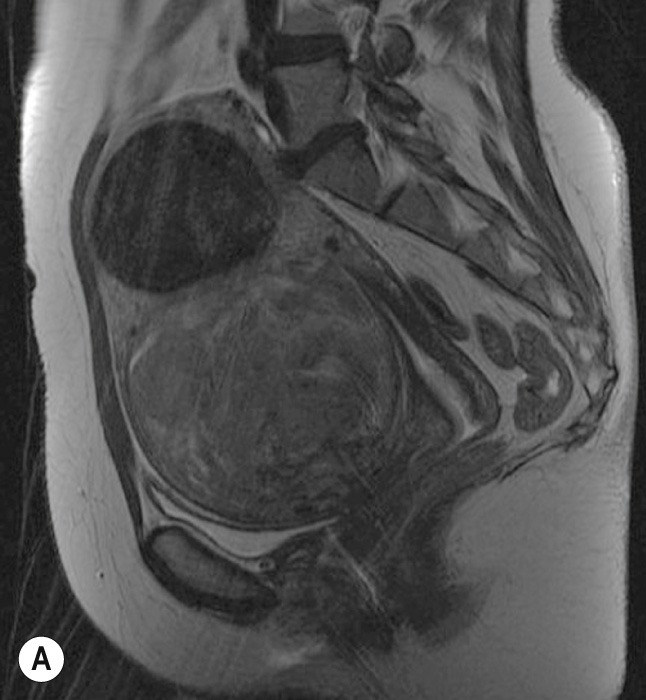
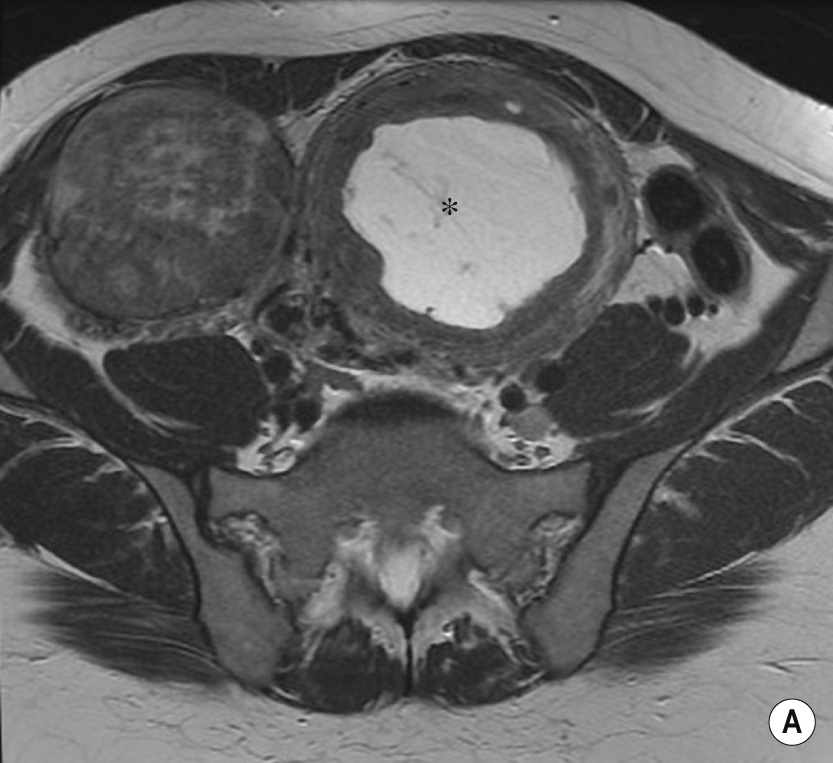
A benign polypoid tumour consisting of a stromal core with the mucosal surface projecting above the level of the adjacent endometrium
Although it can occur at any age, it is commonest in older (>50 years) females
This will often not reveal any endometrial polyps
The homogeneous polyp is isoechoic to (and continuous with) the endometrium ▸ there is a preserved endomyometrial interface ▸ there can be central cystic areas and feeding vessels (best seen with colour Doppler)
This is rarely employed due to the high cost ▸ T1WI: the polyp is isointense to the endometrium (± hypointense foci) ▸ T2WI: the polyp is hypo- to isointense to the endometrium (± cystic changes) ▸ if pedunculated there can be a central hypointense core (± a stalk) ▸ T1WI + Gad: there is homogeneous or heterogeneous enhancement
The diagnostic technique of choice
Differential: submucosal leiomyoma ▸ malignant neoplasm
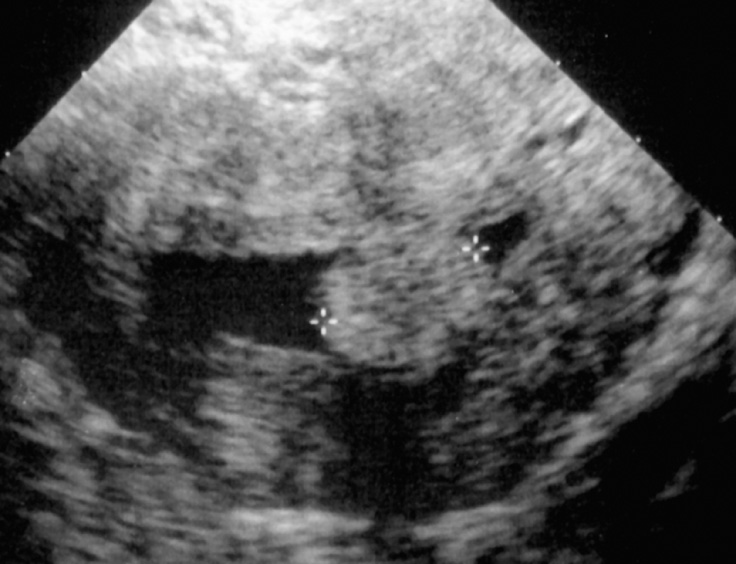
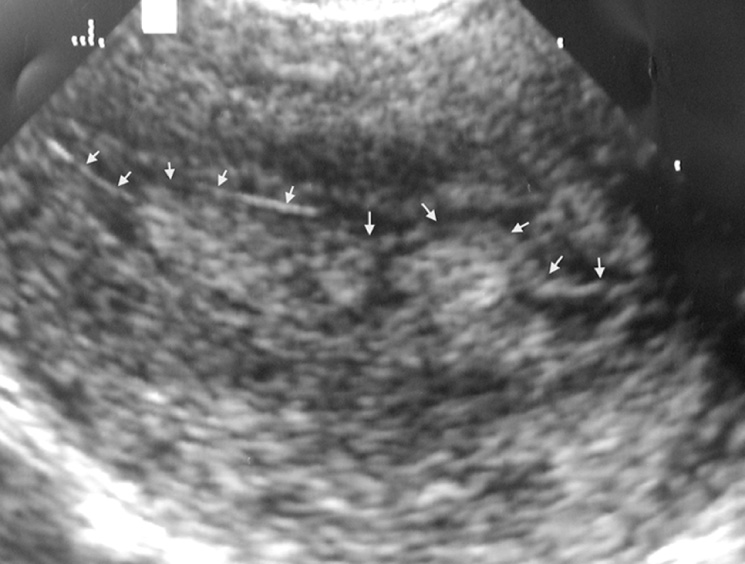
The presence of endometrial tissue within the myometrium, with secondary smooth muscle hypertrophy and hyperplasia
It can be diffuse or focal, and is seen in 15–27% of hysterectomy specimens (there is an increased incidence in multiparous women)
Dysmenorrhoea and dysfunctional uterine bleeding
Become a Clinical Tree membership for Full access and enjoy Unlimited articles
If you are a member. Log in here